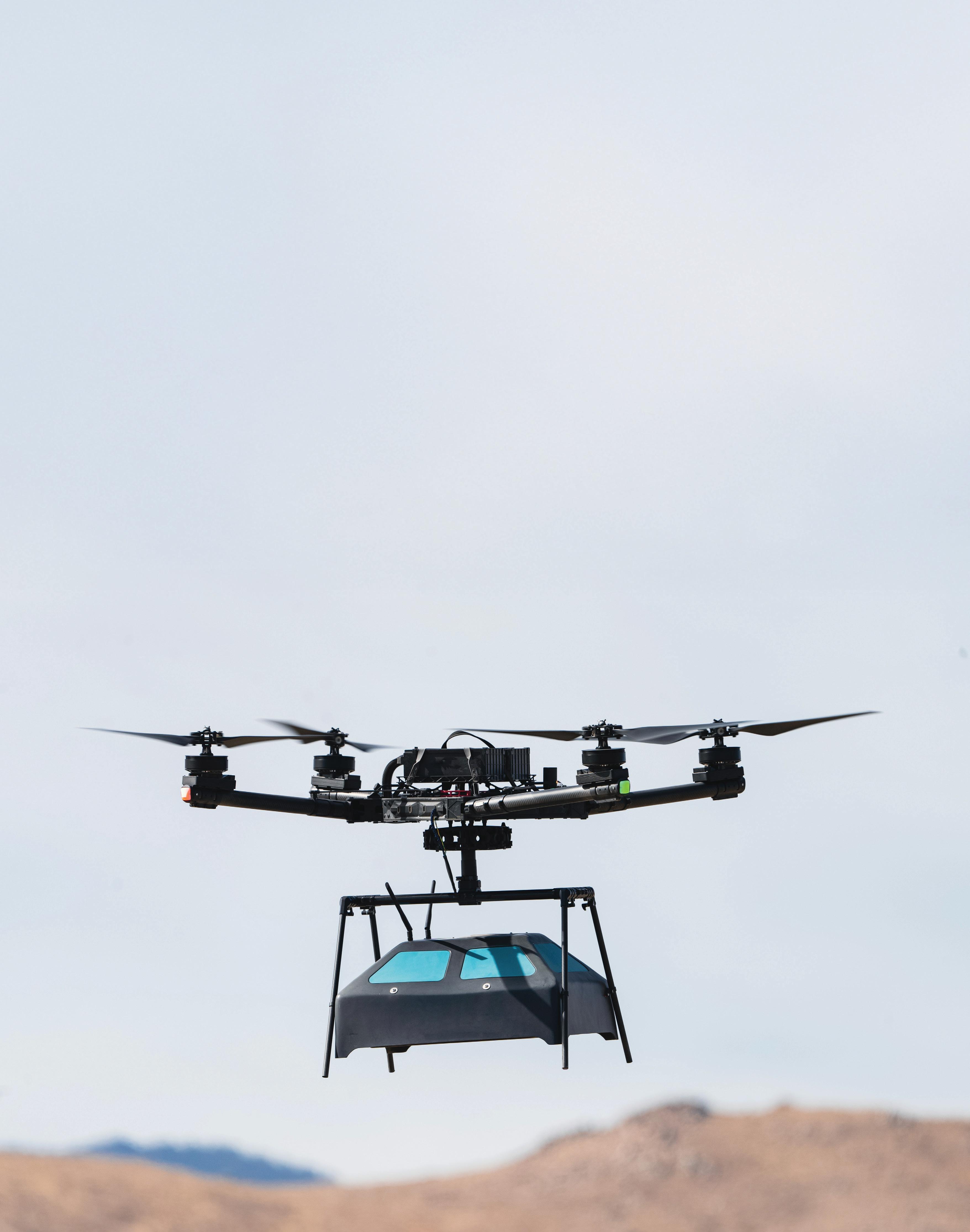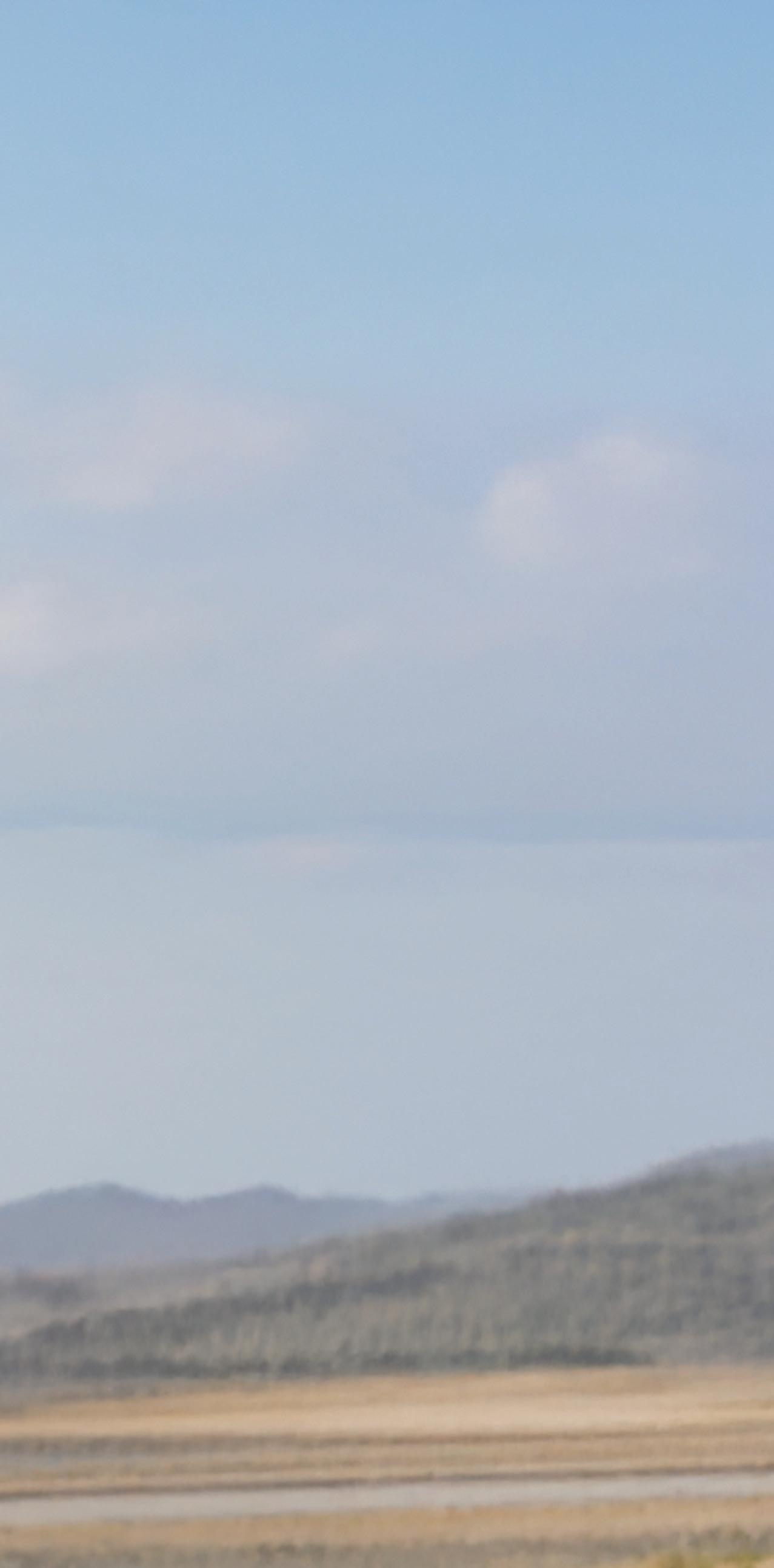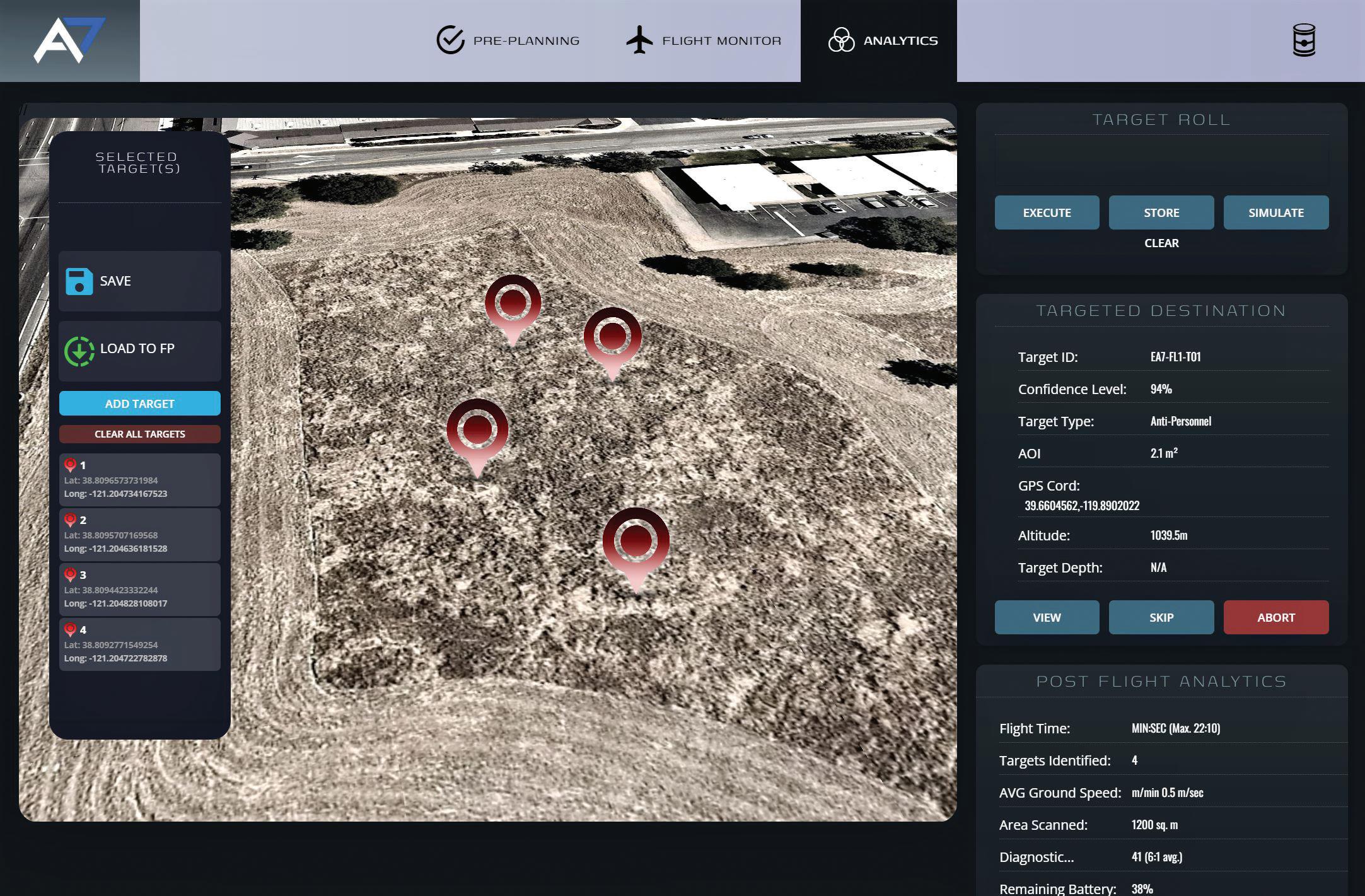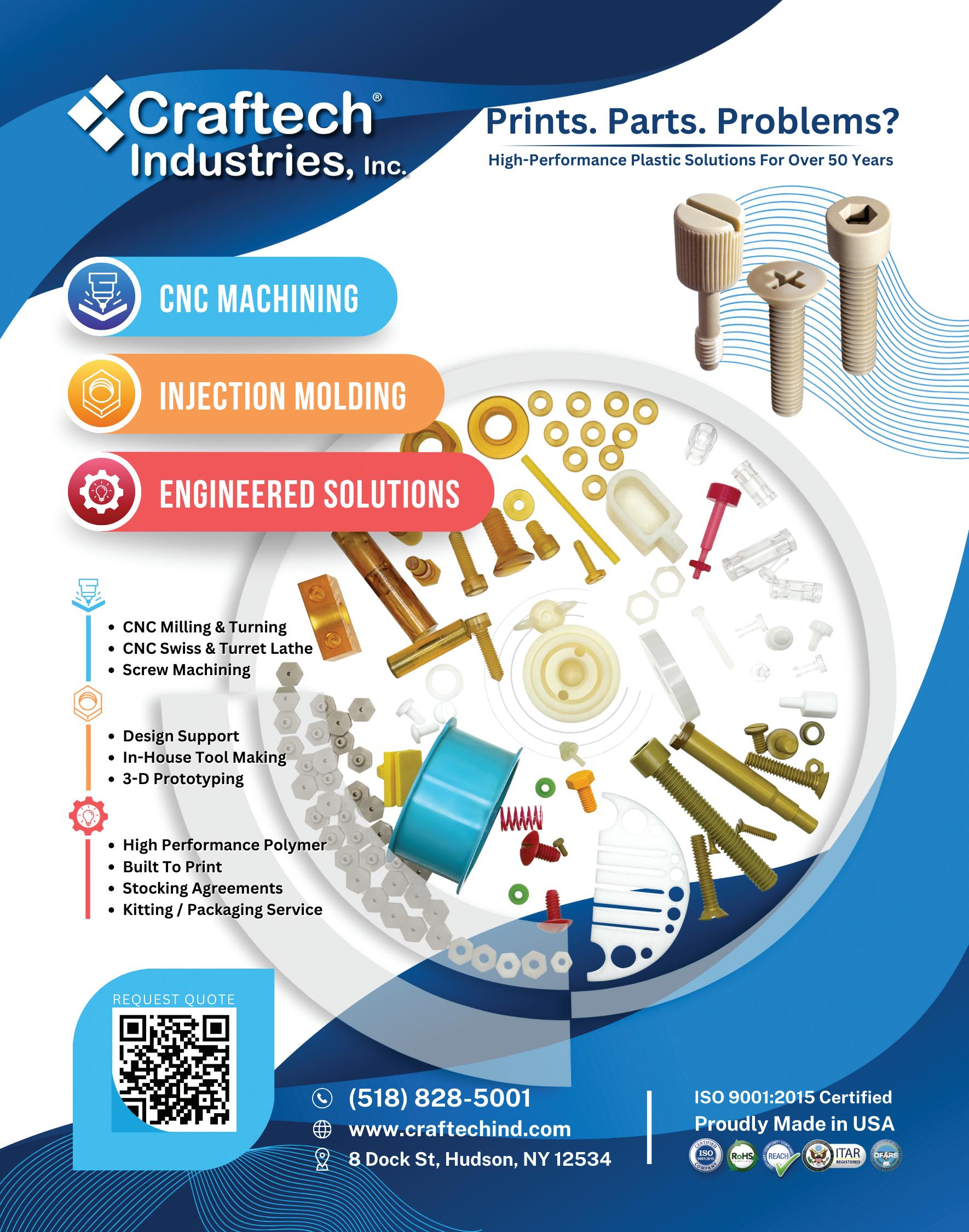October 2025


October 2025

Millions of landmines remain undetected in active and former conflict areas. Harsh Zala and his team at Aerobotics7 have built an AI-enabled solution to detect these threats and save lives.
RACHAEL PASINI EDITOR-IN-CHIEF

Millions of landmines remain undetected in active and former conflict areas. Harsh Zala and his team at Aerobotics7 have built an AI-enabled solution to detect these threats and save lives.
When people think about landmine detection, they might envision soldiers sweeping metal detectors across battle-ridden terrain — a painstakingly slow and dangerous process that has remained mostly unchanged for decades. Though other methods using vehicles and technology exist, they have varying efficacy and still pose significant dangers to operators.
Harshwardhan Zala, founder of Aerobotics7, has a new demining solution with a drone-mounted radar system that can detect buried threats 600 times faster than traditional methods while achieving 96% accuracy on nonmetallic explosives.
The engineering challenge Zala tackles stems from a fundamental shift in explosive device construction. While traditional metal detectors excel at finding metallic components, modern threats increasingly rely on plastic casings and minimal metal signatures, making them nearly invisible to conventional detection methods.
The consequences of not detecting such threats extend beyond the battlefield, taking civilian lives and damaging communities and economies struggling to recover from war.
“Companies in aerospace and defense have been so focused on how we provide the best capabilities when conflicts happen, whether it’s preventing war or winning or attacking or better defense, but they are not incentivized for what happens after these conflicts are ended, to the communities, to the countries, and the
industries being damaged,” said Zala. Determined to work toward his vision of “a world without landmines,” Zala and his team built an innovative system, the Eagle A7, that has caught the attention of governments worldwide.
The Eagle A7 system is a custom radar design that diverges significantly from traditional groundpenetrating radar approaches. While conventional systems are bistatic, with one transmitter and one receiver, Zala's team developed an antenna array architecture.
“Our radar system is an antenna array which creates a 3D point cloud under the surface of the Earth with a broader spectrum of frequency range, from radio waves or RF range to microwave,” Zala said.
This approach enables the system to achieve detection depths of up to three meters from ground level as the drone operates one meter above the surface and generates high-resolution subsurface mapping.
The system includes electro-optical sensors for RGB imaging, thermal cameras for infrared detection, and LiDAR for terrain mapping. This multisensor approach enables sensor fusion, which feeds real-time data to the AI model.
Traditional detection systems often rely on basic threshold logic: signals

The Eagle A7 is an AI-enabled drone with a custom radar system that detects threats three meters below the Earth’s surface. Aerobotics7

Harwin’s connector products are proven to perform in extreme conditions, with shock, vibration and temperature range rigorously tested.
WITH OUR QUALITY, SERVICE, SUPPORT, AND HIGHLY RELIABLE PRODUCTS, YOU CAN DEPEND ON HARWIN.


When product performance matters, it's critical to select a coating partner who can solve your tough engineering problems - eliminate friction, sticking, abrasion and more. With Orion Industries, you get peace of mind that your products and parts will be coated correctly the first time, every time.















above a certain level indicate potential threats, while those below suggest clear terrain. Zala’s approach abandons this binary method in favor of a multimodel AI architecture that analyzes specific signature patterns.
“We're going after a very specific signature pattern that we collect for each of these target types, and our AI model is trained around that,” said Zala. “We have several layers within our AI model. We’ve built a multimodel AI suite which doesn’t operate in a single CNN [convolutional neural network] architecture, for example. Rather, multiple architectures are built in, which helps us first do sensor fusion and then run the AI model specifically around that.”
The system processes sensor data in real-time, building a threat library that adapts to new explosive types as they arise. This adaptive capability addresses a key limitation of static detection systems that struggle with evolving threat signatures.
Zala’s team developed their current AI model through an unconventional path that began in 2015, well before the current AI adoption trends emerged. Working initially without formal engineering education — Zala is mainly self-taught, having learned programming languages and electronics through research papers downloaded at internet cafes in his small hometown in India — he built early prototypes using Ardupilot flight controllers for quadcopter designs.
The sophisticated sensor package and onboard computing power create significant electrical demands. The Eagle A7 system achieves approximately 22 minutes of flight time using two heavy lithium-polymer batteries, which is substantially less flight time than typical drone operations.


“It takes a lot of power — the radar system itself and our computer. Our next milestone is, how can we reduce the power requirements? The power is one of the challenges that we are trying to solve right now,” said Zala.
Despite the power limitations, Zala claims the system’s speed advantages compensate for shorter flight durations. According to his research data, traditional demining operations require approximately one hour to detect and clear a single square meter of terrain. In comparison, he states the Eagle A7 system covers the same area in two to five seconds, providing detection data directly to ground-based deminers.
Autonomous navigation enables pattern recognition
The Eagle A7 incorporates autonomous navigation capabilities that allow single-operator control while the drone
executes predetermined search patterns. The system creates its own navigation protocols and flight maneuvers based on terrain characteristics and mission requirements.
“The great thing about our software is not only a single operator interface, but it has autonomous navigation and autonomy built in. So, we create our own navigation inside that, and the drone flies and creates maneuvers around where it’s most applicable or needed, and runs patterns accordingly,” Zala said.
Operators can select target areas remotely, with the drone executing autonomous scanning while providing real-time threat identification through a ground control interface.
Rather than developing proprietary drone hardware, Aerobotics7 focused its engineering resources on the detection system itself. This strategic decision allows integration with existing drone platforms
that customers already operate, reducing adoption barriers and enabling scalability.
"Building a drone is reinventing the wheel at this point in time, and if we want to have the scalable effect we want, we want to join hands with someone who's been in this, and our customers are already using their technologies," Zala said.
The modular approach extends beyond aerial platforms. Zala said he can install the sensor package on uncrewed ground vehicles, tractors, and autonomous underwater vehicles for maritime mine detection.
Testing and validation results pique government interest
Aerobotics7 has achieved Technology Readiness Level 7 (TRL-7) by demonstrating its capabilities in an operational environment with military partners. Testing included both replica The AI model collects and analyzes real-time data, and threats are displayed


Rotor Clip Wave Springs are engineered to save space and weight by reducing spring heights up to 50%. Our experienced engineering team is ready to assist you in specifying a standard spring or developing a custom design in the material and size you require. From prototype to production, we'll provide you with the perfect spring solution for your application.


landmines and actual explosive devices (some with charges removed).
The company’s claimed 96% accuracy rate specifically applies to nonmetallic threats found in Ukraine, piquing the interest of Ukraine’s Ministry of Defense. However, Zala notes that detection performance varies based on environmental characteristics, soil conditions, and threat types.
The engineering motivation behind Aerobotics7’s development stems from the massive scale of global landmine contamination. Zala cites estimates of more than 100 million active landmines buried across 60-plus countries, with traditional clearance methods proving inadequate for the scope of contamination.
Ukraine’s situation exemplifies the challenge: Zala states that 25% of the country’s territory is contaminated or suspected of being contaminated, with half of that area consisting of farmland. According to Zala’s Ukrainian partners, clearance efforts have addressed less than 0.2% of contaminated areas despite spending more than $1 billion in the past few years.
“Compare that with our technology, or what we are able to achieve right now ... it takes us two to five seconds to cover a square meter of area, sense, detect,
and provide the data to the deminer,” Zala said. “So that saves a lot of effort, a lot of time for these deminers, almost 600 times faster.”
The technology addresses both postconflict cleanup and active battlefield scenarios. Zala notes that more than half of military casualties result from IEDs (improvised explosive devices) and buried threats rather than direct combat engagement, creating operational demand beyond humanitarian demining applications.
Aerobotics7 received recognition as the winner of the 2024 Kluz Prize for PeaceTech, an award that highlights what founder Artur Kluz terms “triple-use” technology companies. This concept extends beyond traditional dual-use (defense and commercial) applications to include peace technology use cases.
“Triple-use is very interesting. It’s companies that are doing applications and supporting defense use cases, using their technology as well as commercial ones. But on top of that, they also have a really strong use case on social impact PeaceTech as well,” Zala said.
This approach enables defense contractors to address postconflict remediation while maintaining commercial viability and defense capabilities, thereby encouraging broader industry
With an antenna array architecture and multiple sensors, the system creates high-resolution subsurface mapping and detects threats with 96% accuracy. . Aerobotics7
participation in peace technology development.
Engineering a path forward
Looking ahead, Aerobotics7's primary engineering challenges center on power optimization to extend flight duration and continued refinement of the AI model for emerging threat types. The company plans to deploy multiple drones simultaneously to cover larger areas more efficiently, following robotics trends toward swarm deployment rather than single large-system approaches.
The modular sensor architecture positions the technology for integration across multiple platform types, potentially enabling coordinated air, ground, and maritime detection operations using the same core detection algorithms and signature libraries.
For Zala, whose informal engineering education path began with dismantling electronics in his grandfather's workshop and progressed through self-directed research and tinkering, the technical challenges represent a pathway toward what he describes as "a world without landmines."
"The only thing that will keep me going is the purpose of why I started this," he said. "How can we utilize the power of technology to safeguard these countries and safeguard lives at a massive scale?" AD
